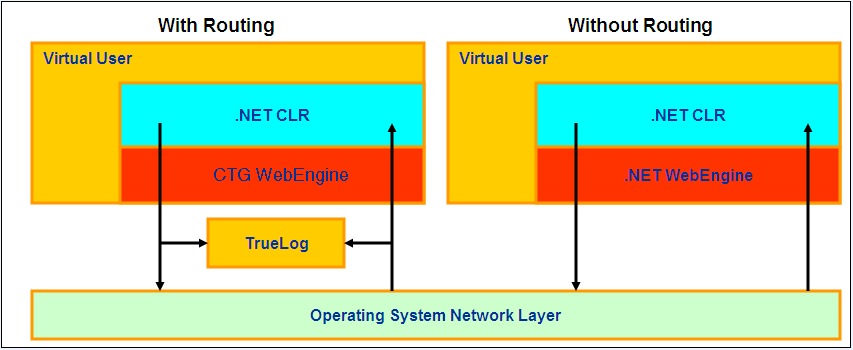Web Service Calls
The Silk Performer .NET Framework can route Web traffic generated by .NET components over the Silk Performer Web engine. This means that the Silk Performer Web engine executes the actual Web requests, allowing you to see exactly what is sent over the wire. This enables you to make use of Silk Performer Web engine features such as modem simulation, IP multiplexing, network statistics, and TrueLog.
By default, all network traffic is routed over the Web engine. You can however enable routing only for specific Web Service client proxy classes. To enable this feature only for specific Web Service proxy classes, change the base class of a proxy class from SoapHttpClientProtocol to SilkPerformer.SPSoapHttpClientProtocol.
This base class exchange allows the Silk Performer .NET Framework to generate more detailed statistical information for each Web Service call. It is recommended that you enable this feature for all of your Web Service proxy classes. This can be done using Visual Studio’s Web Service dialog box, which is accessible via the Silk Performer menu.
When this feature is disabled, the .NET HTTP classes process all requests.
For each Web Service call, a node is created in the TrueLog with the SOAP envelope that was passed to the Web Service and returned to the client.
When all or some classes are instrumented by Silk Performer, the HTTP traffic responsible for Web Service calls is routed over the Silk Performer Web engine. Network traffic and statistics are then written to the TrueLog. Modem simulation and IP multiplexing are also available.
